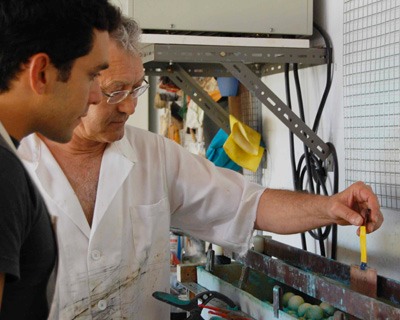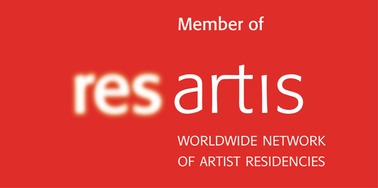
Introduction
The Electro-etching residency introduces the artist to an
alternative technique of intaglio etching, using a completely non-toxic
electrical process, and thus avoiding completely the harmful acids used in
traditional etching. The electro-etching residency is located within the
workshop and residence of the artist Alfonso Crujera, a master printmaker and
specialist in the varied techniques of etching with electrolysis.
About Electro
Etching
Today many etchers are growing increasingly concerned about
the highly toxic nature of their craft. In response, they are investigating new
products, new resists and mordents, and are discovering how to modernize and
improve upon traditional techniques.
It is usual to hear of “non-toxic” or “low-risk” etching,
where acids are replaced with salts, and asphaltum resists are replaced with
non-toxic acrylic or oil-based resists. These substitutions (and lots more)
create a corpus of low-risk materials and techniques that can transform the
workspace into safe and clean environment, free from dangerous substances.
One of these processes, electro-etching, is a forgotten and
practically unknown technique from the 19th Century. It is currently one of the
most attractive, innovative, and practical method of etching copper, zinc, or
iron plates, minimising the risks for both the etcher and the environment. The
electro-etching process does not generate toxic gases, nor does it produce
residues. The mordents do not become exhausted by successive bites and neither
noxious rosin nor asphaltum are used for aquatint.
About Alfonso Crujera
Since 2001, when he was first introduced to the technique of electro-etching at Atelje Larsen in Helsinborg, Sweden, Alfonso Crujera (Seville, 1951) has devoted himself to the practice of this new technique. The knowledge and experience gained through his extensive investigations has been shared at conferences and courses on electro-etching at universities and workshops. He has published a manual and numerous articles outlining the diverse processes of etching using electrolysis. His expertise has been in demand in Spain and Mexico, advising the setup of electro-etching units in workshops and teaching specialised courses.
The location
The non-toxic workshop and residence of the artist, Alfonso
Crujera, is located on the north coast of the island of Gran Canaria, Spain. It
is 700 metres from the neighborhood of San Felipe, which boasts tidal swimming
pools, restaurants, and a beach ideal for surfing.
The residence is a traditional coastal farmhouse, lovingly restored
by the artist. The print workshop is
70m² and has an adjoining private studio apartment available for the resident
artist. It is located on the slopes of a
beautiful ravine, abundant with plants native to the Canary Islands. From the naturally lit studio, the residence
and the balconies, you can enjoy the magnificent panorama of the sea and
surrounding farmland. The area enjoys a
very pleasant and moderate subtropical climate year round, with average
temperatures ranging between 12-28ºC.
In this natural environment, perfect for reflection and
creativity, the artist has transformed the workshop into a workspace that is
free from toxic emissions and respectful to the environment.
During the Residency
The resident artist will be introduced to the fascinating
process of electro-etching copper and zinc plates instead of using traditional
acids. He will have access to the master’s direct and personal assistance and
will have the opportunity to develop their current knowledge of non-toxic
etching using electricity, applying these techniques to their own work. The
artist will also learn how to assemble an electro-etching unit themselves, so
they will be able to continue electro-etching in their own studio back home.
The workshop is available to the resident artists 24 hours a
day.
Theoretical content
• Rudiments of electrolysis
• History of electro-etching
• Principles of electro-etching
• The electro-etching unit
Practical content
• Preparation of the plate, including filing and degreasing
• Hard ground, etching lines
• Electrotint with open bite
• Resists made with graphite ink
• Soft ground
• Deep bite with passive electrolysis
• Semi-dry electro-etching
• Alternative resists (lithographic pencil, oxidation, splashing, electroplate, etc.)
• Galvanizing lines and electrotint
• Galvanography
Language:
English and Spanish
For more
details about the residence, please email: electro@crujera.com
Member of:
